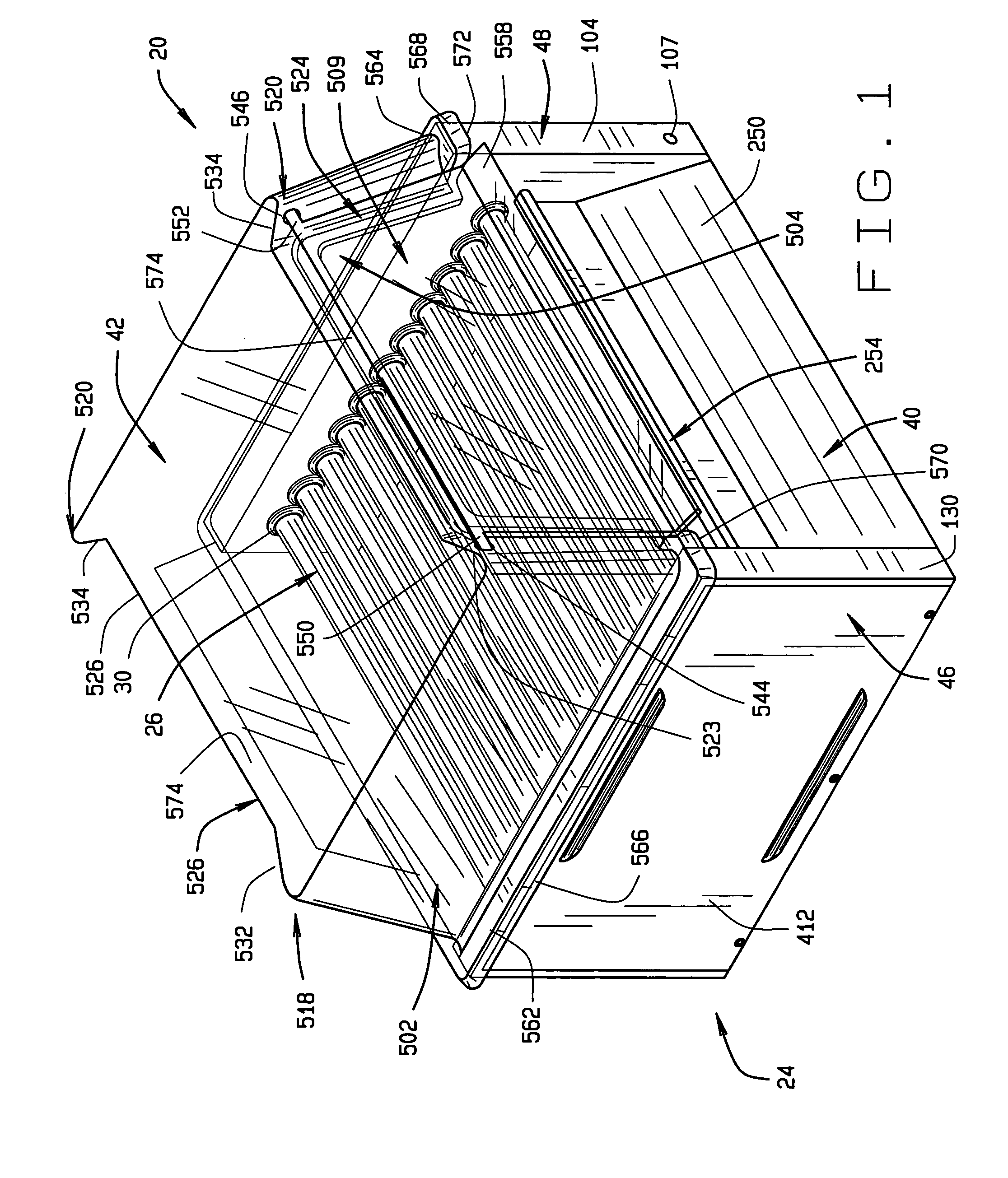Roller grill assembly for cooking human food
a technology for grilling and human food, which is applied in the field of assembly for cooking human food, can solve the problems of dislocating or disengaging the drive chain from the drive, and affecting the cooking effect so as to improve the withstandability and resist the distortion of the idler member and its mounting. , the effect of protecting the food
- Summary
- Abstract
- Description
- Claims
- Application Information
AI Technical Summary
Benefits of technology
Problems solved by technology
Method used
Image
Examples
Embodiment Construction
[0053] The following detailed description illustrates the invention by way of example and not by way of limitation. This description will clearly enable one skilled in the art to make and use the invention, and describes several embodiments, adaptations, variations, alternatives and uses of the invention, including what we presently believe is the best mode of carrying out the invention. As various changes could be made in the above constructions without departing from the scope of the invention, it is intended that all matter contained in the above description or shown in the accompanying drawings shall be interpreted as illustrative and not in a limiting sense.
[0054] Overall General Description
[0055] First, an overall general description will be given. With reference to FIGS. 1-15 of the drawings, the roller grill assembly for cooking human food is generally designated 20. The assembly 20 generally comprises a main housing 24, upon which are mounted a plurality of rotatable tubu...
PUM
 Login to View More
Login to View More Abstract
Description
Claims
Application Information
 Login to View More
Login to View More - R&D
- Intellectual Property
- Life Sciences
- Materials
- Tech Scout
- Unparalleled Data Quality
- Higher Quality Content
- 60% Fewer Hallucinations
Browse by: Latest US Patents, China's latest patents, Technical Efficacy Thesaurus, Application Domain, Technology Topic, Popular Technical Reports.
© 2025 PatSnap. All rights reserved.Legal|Privacy policy|Modern Slavery Act Transparency Statement|Sitemap|About US| Contact US: help@patsnap.com



